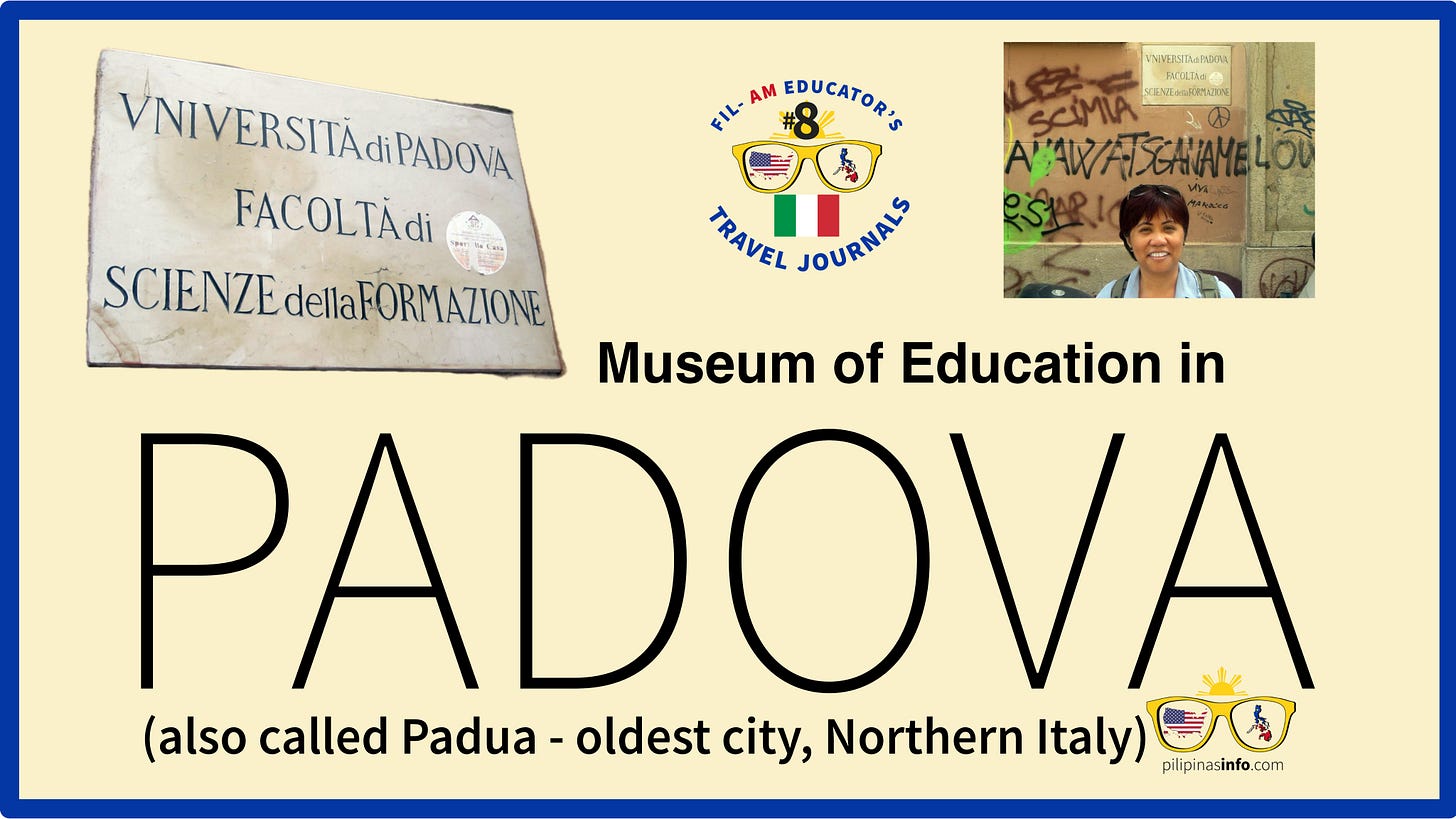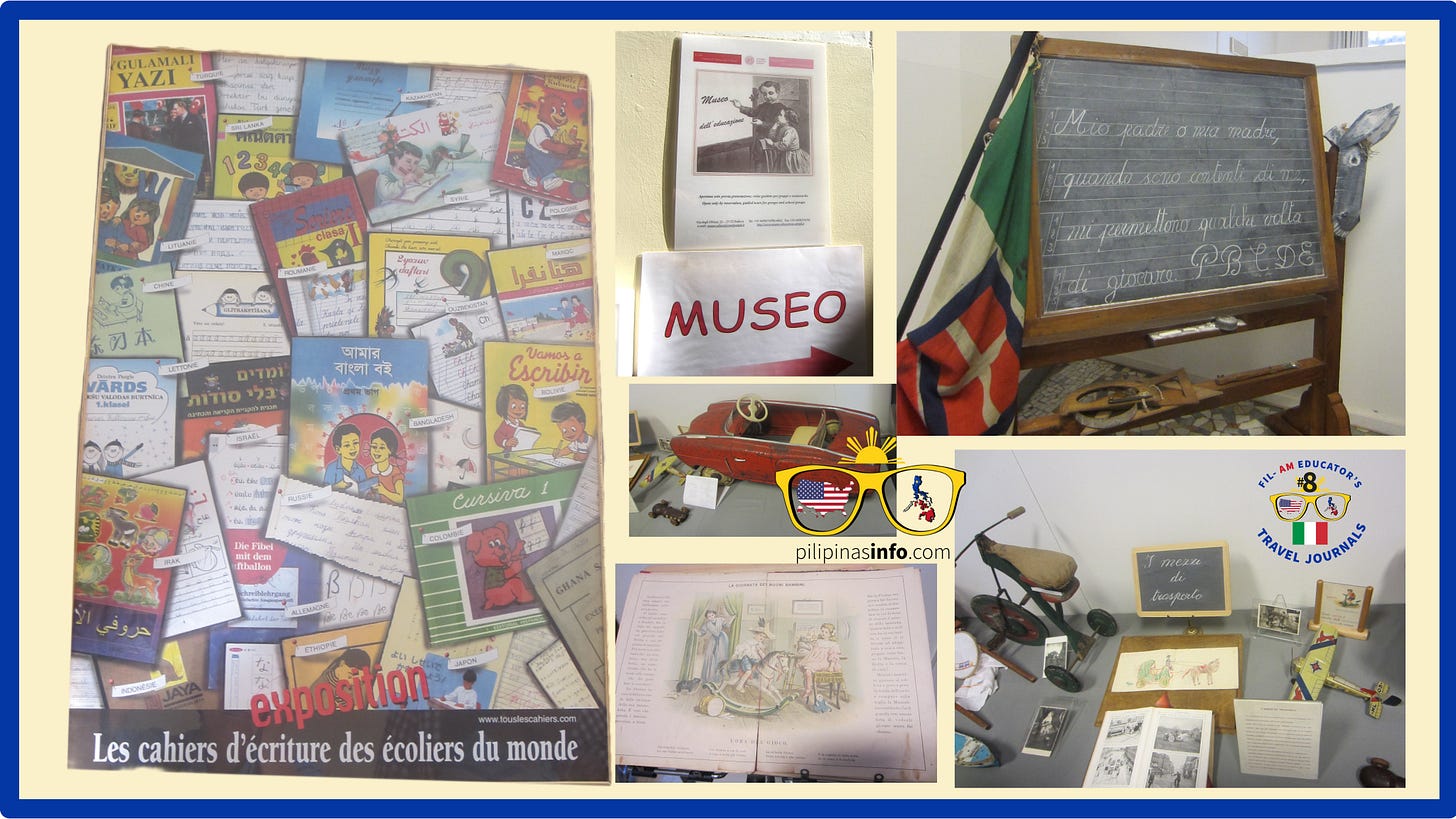Museum of Education in Padova or Padua (supposedly the oldest city in Northern Italy)
2012 Italy Travel Observations of a Bilingual SPED Teacher Day No. 8
This is the eighth post about my trip to Italy in the summer of 2012. It was one of my requirements to complete the GWU Education Specialist Degree that was granted through the partnership of US Education Department, the school district I worked for and George Washington University. Even then, I was writing from the POV of a Filipino Educator teaching in the USA. There are hidden gems in these journal entries worthy to be shared.
Some claim that Padua, also known as Padova, is the the oldest city in Northern Italy. We stopped there on the way to Venice and visited the University of Padova's Museum of Education. There, I asked Dr. Francesca Gobbo about the history of special education in Italy. It turned out that she, together with two other academic writers, were contracted to write a report on Italian inclusion by the European Commission's Directorate General for Education and Culture. It had a small section about the legislation of national inclusion but it did not explain the events before that.
History of SPED
Whenever I ask questions about the history of special education in Italy, most speakers either give me a list of legislation or say mention that they always accept children with special needs in regular schools. It was only when I read D'Alessio's book, Inclusive education in Italy: A Critical Analysis of the Policy of Integrazione Scholastica, when I began to understand that a number of factors: political social, economic, pedagogical and religious, influenced the passing of integrazione scholastica, or national integration.
Museum Showed Integration Mentality
Later, we toured the Museum of Education and saw an old classroom, complete with a teacher's table, a number of student desks, places for putting coats and lunch boxes and an old blackboard. They also have old toys and vocational equipments like sewing machines. There was no special educational material for children with special needs. It seemed that they do not differentiate students and provide materials for everyone to use.
Because it was an Education Museum, I was hoping to see historical item that I can include in my project about the history of special education in Italy but there was none. The same happened in the Children's Institute at Florence and at the Reggio Emilia Centro Internazionale. But looking back, I realize that Italy has a different mindset. D'Alessio (2011) mentioned that Italy has an “integrationist mentality.” I work in the United States wherein we love to label and differentiate children. Italy has a unique and rich culture. No wonder their museum and schools lack special education artifacts! They have an “integrationist mentality”! Next stop: Venice and the craftsmanship I observed there.



